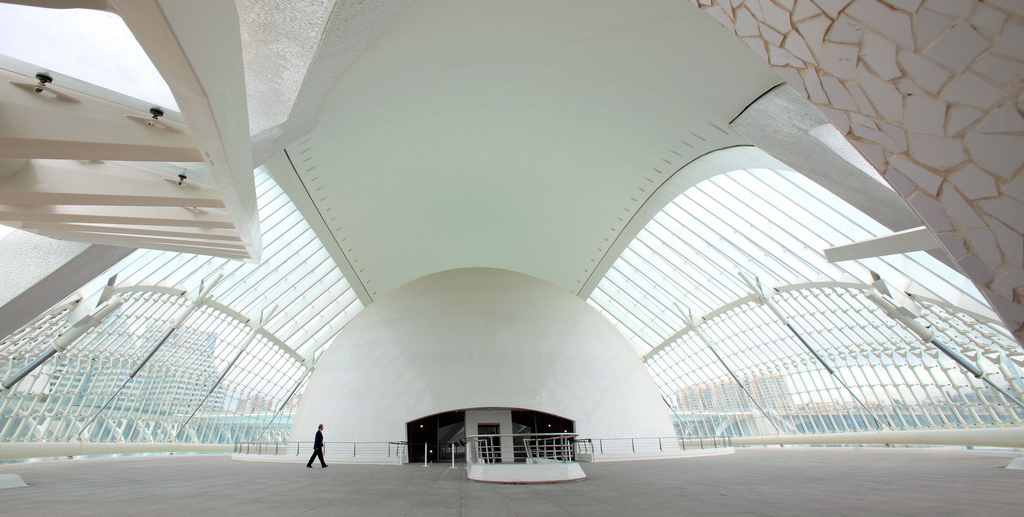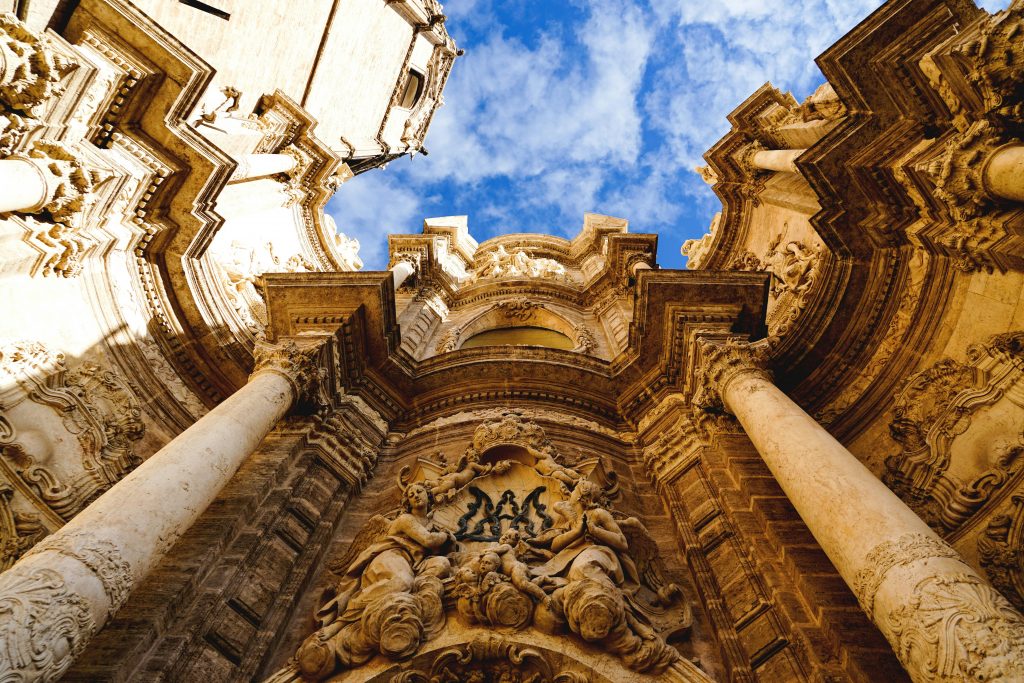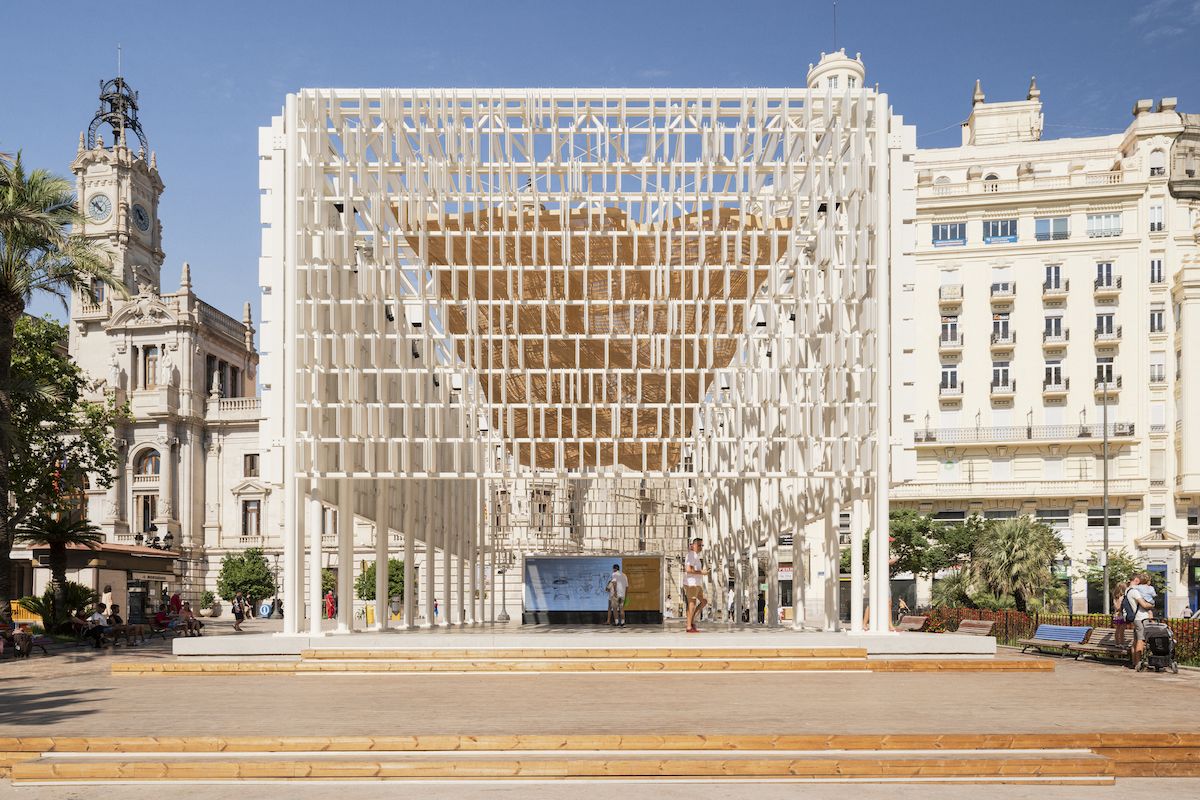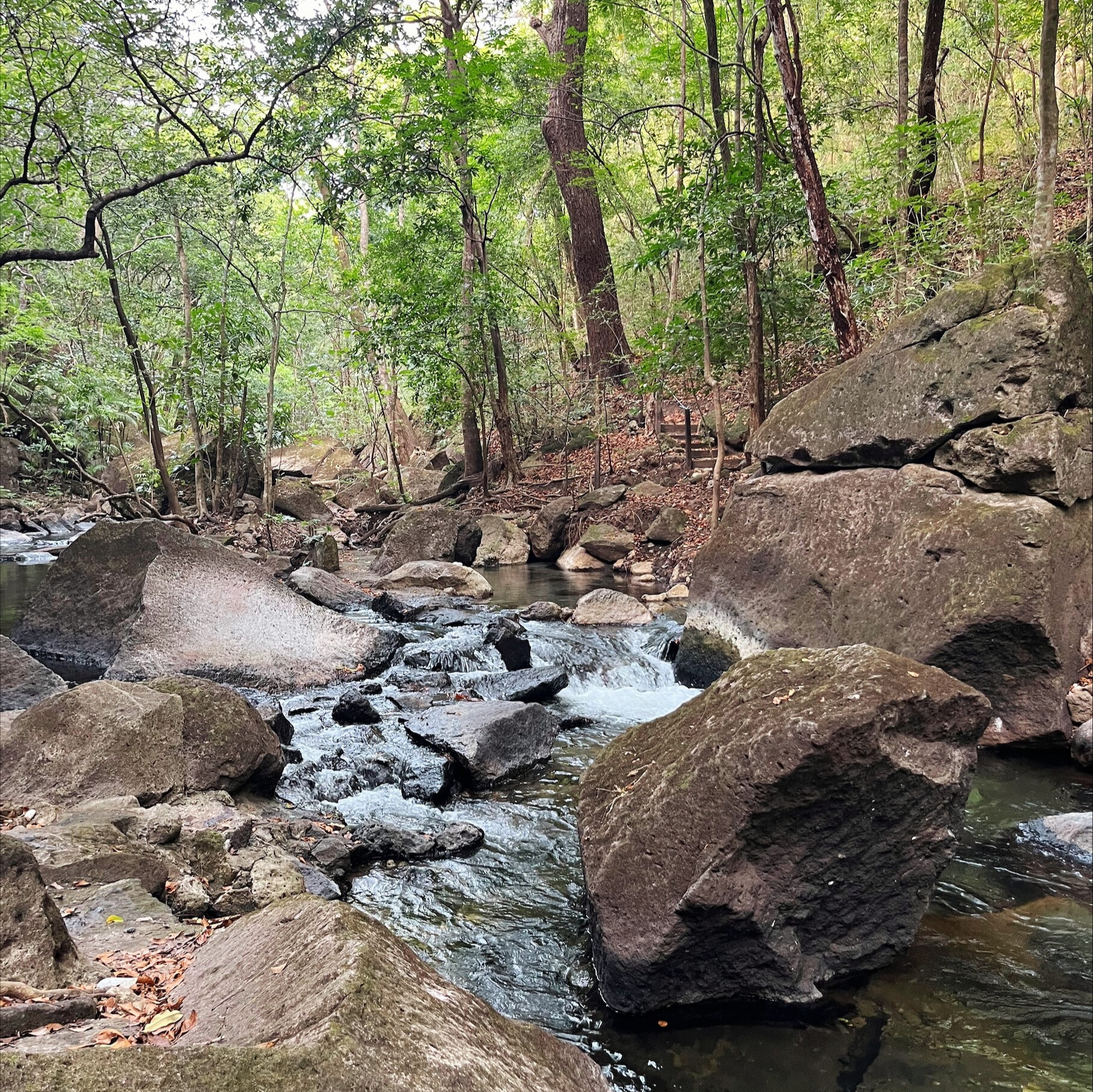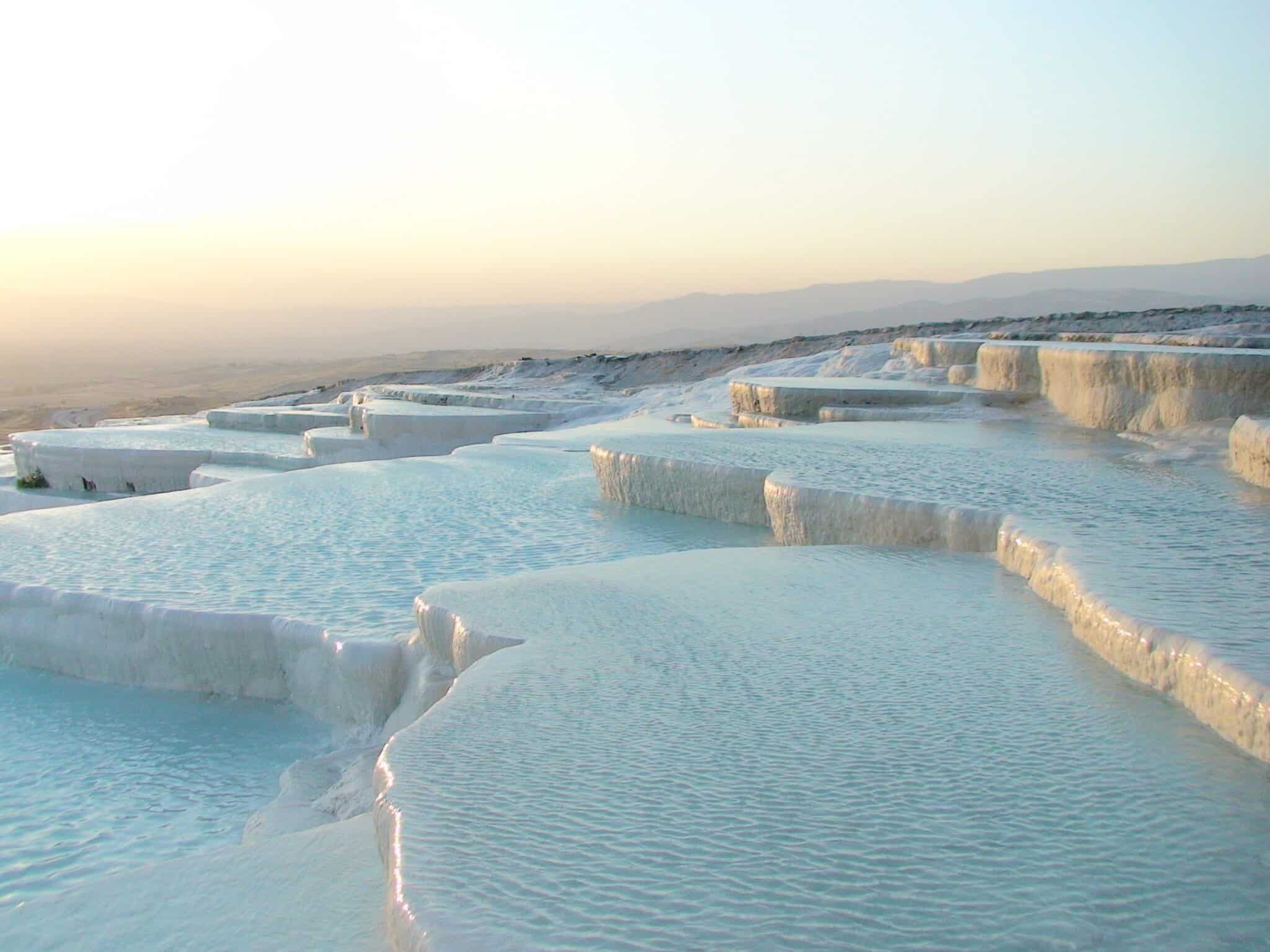Erkundung des architektonischen Tanzes zwischen historischer Eleganz und moderner Innovation
In der lebendigen Stadtlandschaft Valencias, wo das Flüstern der Vergangenheit auf die kühnen Erklärungen der Zukunft trifft, schafft das Zusammenspiel von antiker Architektur und zeitgenössischem Design eine visuelle Symphonie, die sowohl harmonisch als auch aufregend ist. Diese spanische Stadt, eingebettet an der Küste des Mittelmeers, bietet eine überzeugende Fallstudie darüber, wie urbane Umgebungen ihre historischen Wurzeln respektieren und verjüngen können, während sie gleichzeitig die Möglichkeiten moderner Architektur ergreifen. Die jüngste Anerkennung der Stadt als Welt-Designhauptstadt 2022 verkörpert ihr Engagement, Design als transformatives Werkzeug in verschiedenen Bereichen zu nutzen.

Diego Delso, CC BY-SA 3.0, via Wikimedia Commons
Die architektonische Reise Valencias beginnt in seiner Altstadt, wo die gotischen Türme der Torres de Serranos seit dem 14. Jahrhundert Wache stehen. In der Nähe dient die Kathedrale von Valencia, mit ihrer Vielfalt an romanischen, gotischen und barocken Elementen, als zentraler religiöser und historischer Leuchtturm.
Zu den architektonischen Schätzen der Stadt zählt auch der Palast des Marqués de Dos Aguas mit seiner atemberaubenden barocken Fassade und den kunstvollen Alabasterschnitzereien, in dem das Nationale Keramikmuseum untergebracht ist. Dieser Palast zeigt nicht nur die Opulenz des spanischen Adels, sondern bewahrt auch die künstlerischen Traditionen Valencias durch seine beeindruckende Sammlung von Keramiken.
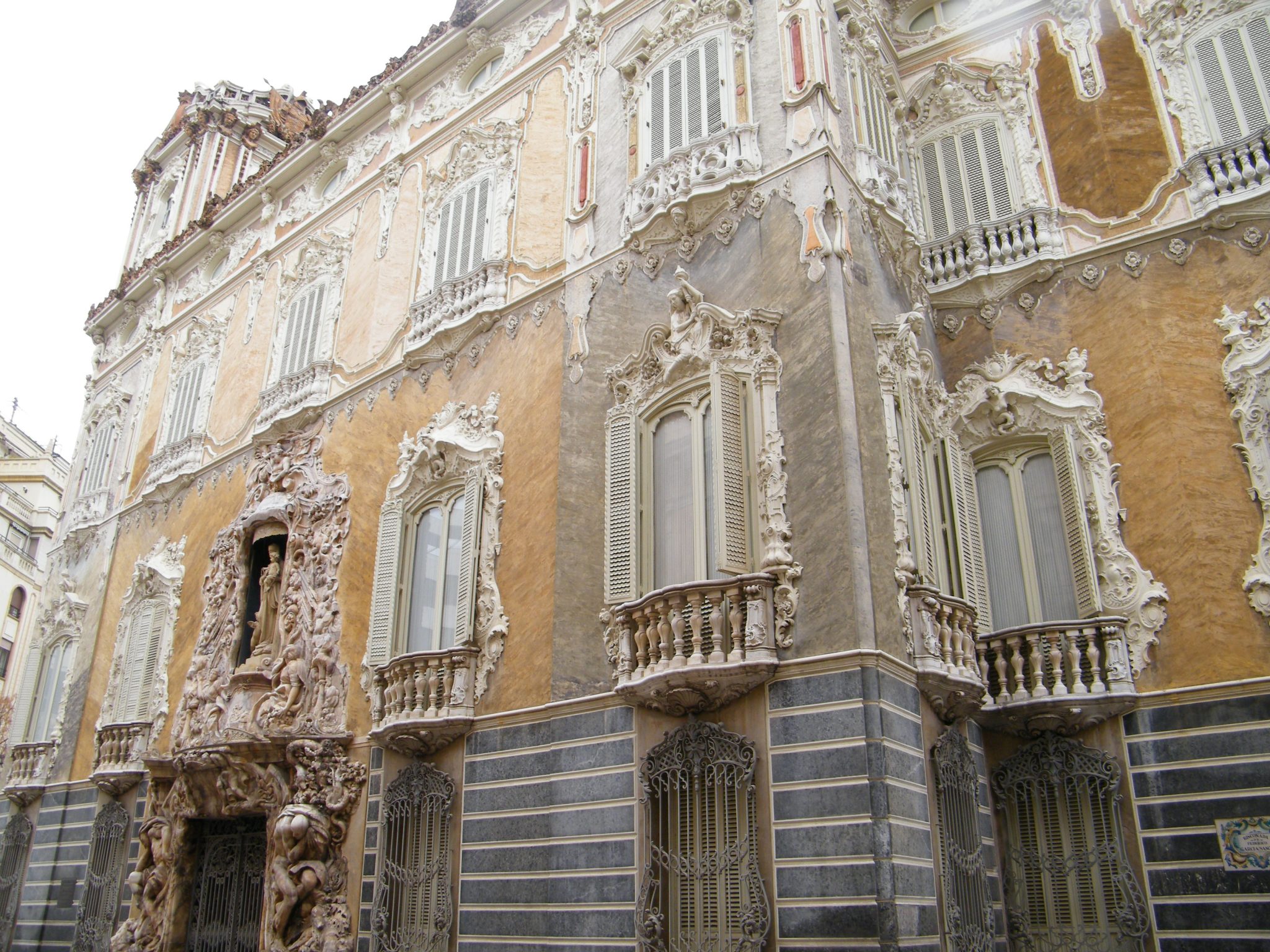
Dorieo, CC BY-SA 3.0, via Wikimedia Commons
Zu Beginn des 20. Jahrhunderts nahm Valencia den Modernismus, Kataloniens Interpretation des Jugendstils, an, der eine Welle architektonischer Innovationen mit sich brachte, die lebhaft in der Nordstation (Estación del Norte) verkörpert sind. Entworfen von Demetrio Ribes, einem der prominenten Architekten dieser Bewegung, ist die Station ein Juwel der Stadtlandschaft mit ihren ornamentalen Mosaiken und geschwungenen Linien, die die Dynamik der Ära widerspiegeln. Dieser architektonische Stil markiert eine bedeutende Periode in der städtischen Entwicklung Valencias und spiegelt einen aufkeimenden Geist der Modernität und Kreativität wider, der die zeitgenössischen Designbewegungen vorwegnahm.
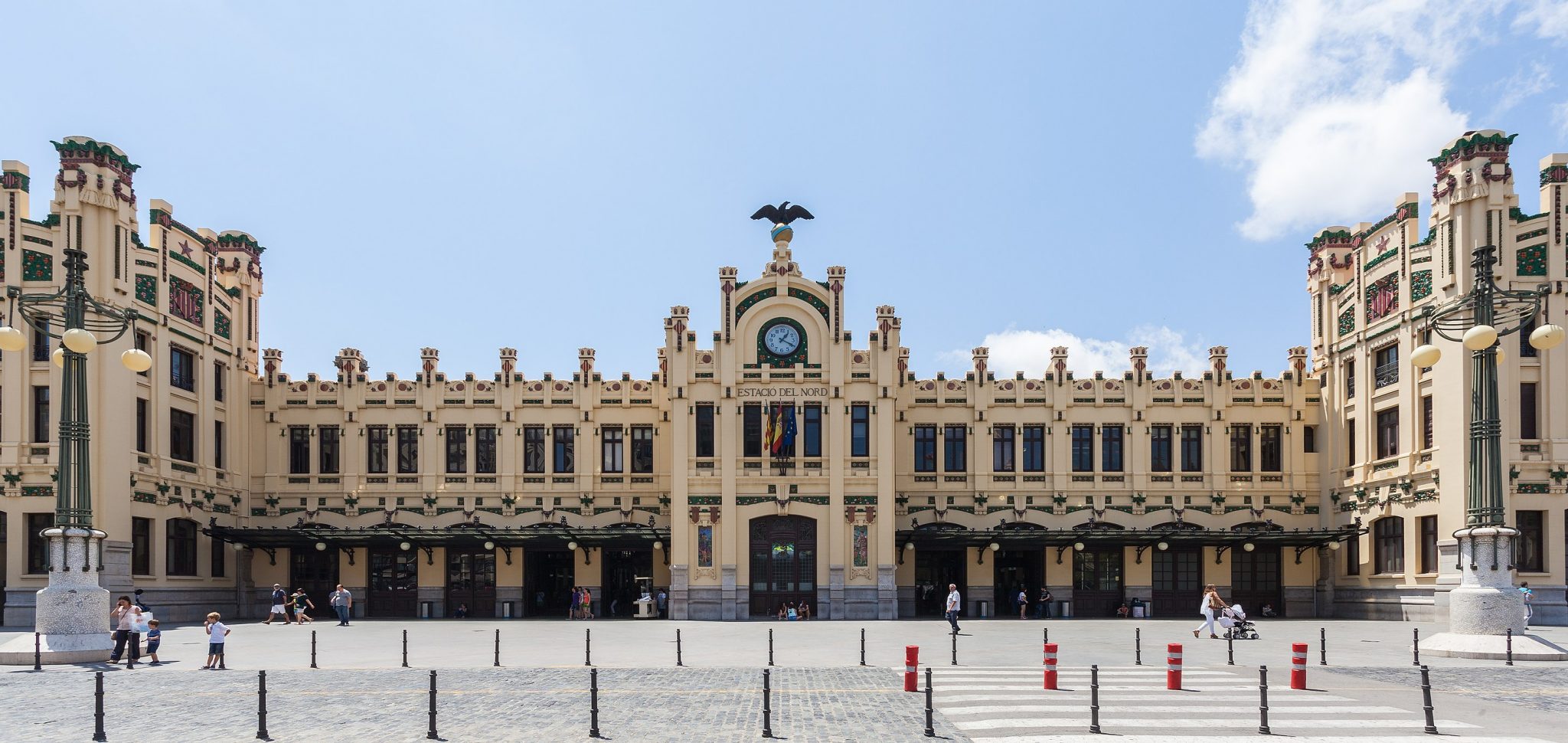
Diego Delso, CC BY-SA 4.0, via Wikimedia Commons
Im scharfen Kontrast zu diesen historischen Wahrzeichen steht die Stadt der Künste und Wissenschaften, ein architektonischer Komplex, der aussieht, als wäre er aus der Zukunft beschworen worden. Entworfen von Santiago Calatrava, ist dieser Komplex eine Feier der Fließfähigkeit in Beton und Glas und beherbergt unter anderem ein Wissenschaftsmuseum, ein Opernhaus und das größte Aquarium Europas.
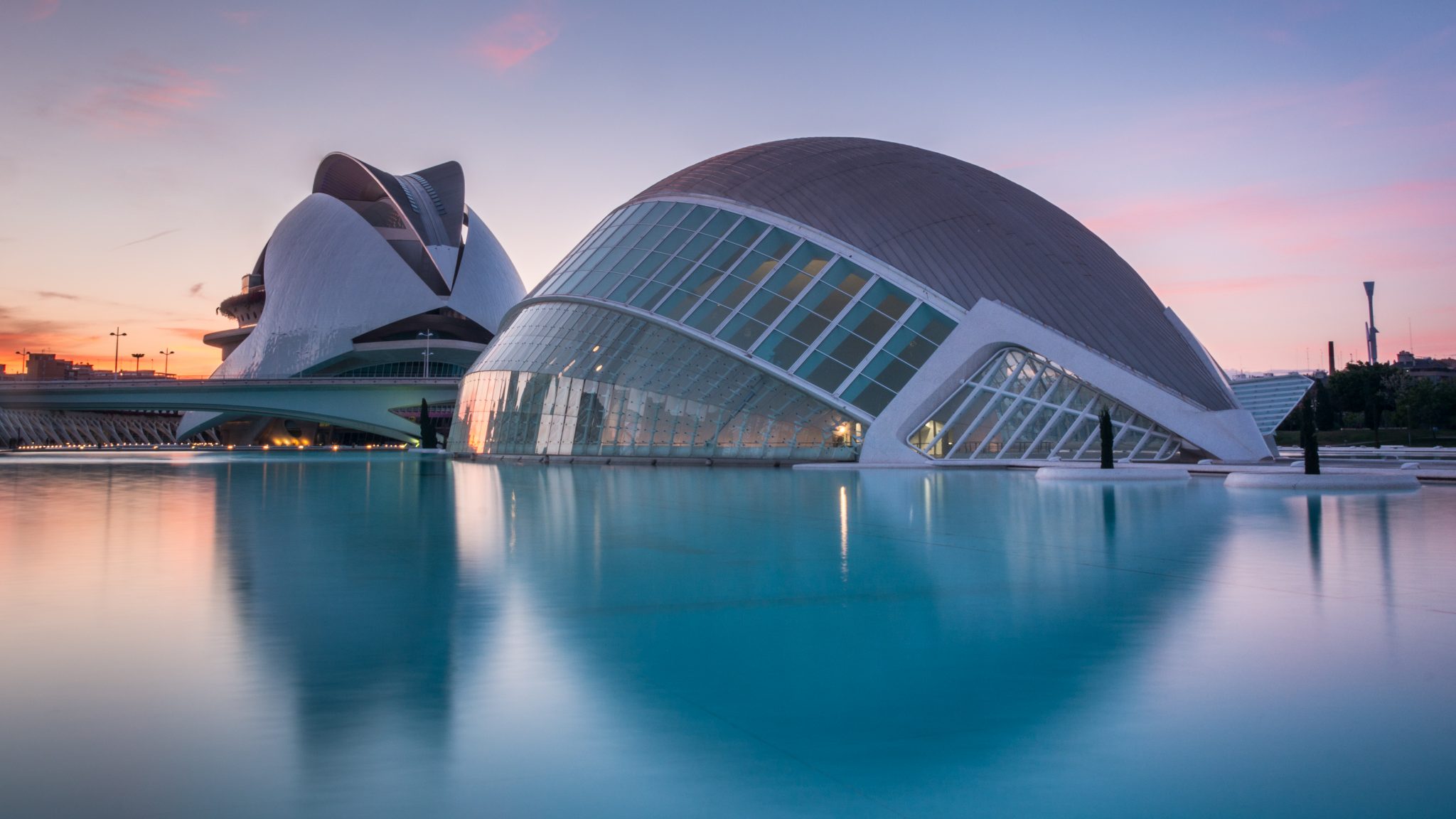
City of Arts and Sciences, Valencia © 2019 by kuhnmi is licensed under CC BY 4.0
Weiterhin integriert die moderne architektonische Stärke, spiegelt die Banco de Valencia die wirtschaftliche Geschichte der Stadt und ihre Rolle im modernen Handel wider. Ihre Fassade, eine Mischung aus neoklassischen und modernistischen Stilen, repräsentiert die Entwicklung der Bankenarchitektur in Spanien und steht als Zeugnis für das finanzielle Wachstum und die Modernisierung der Stadt.
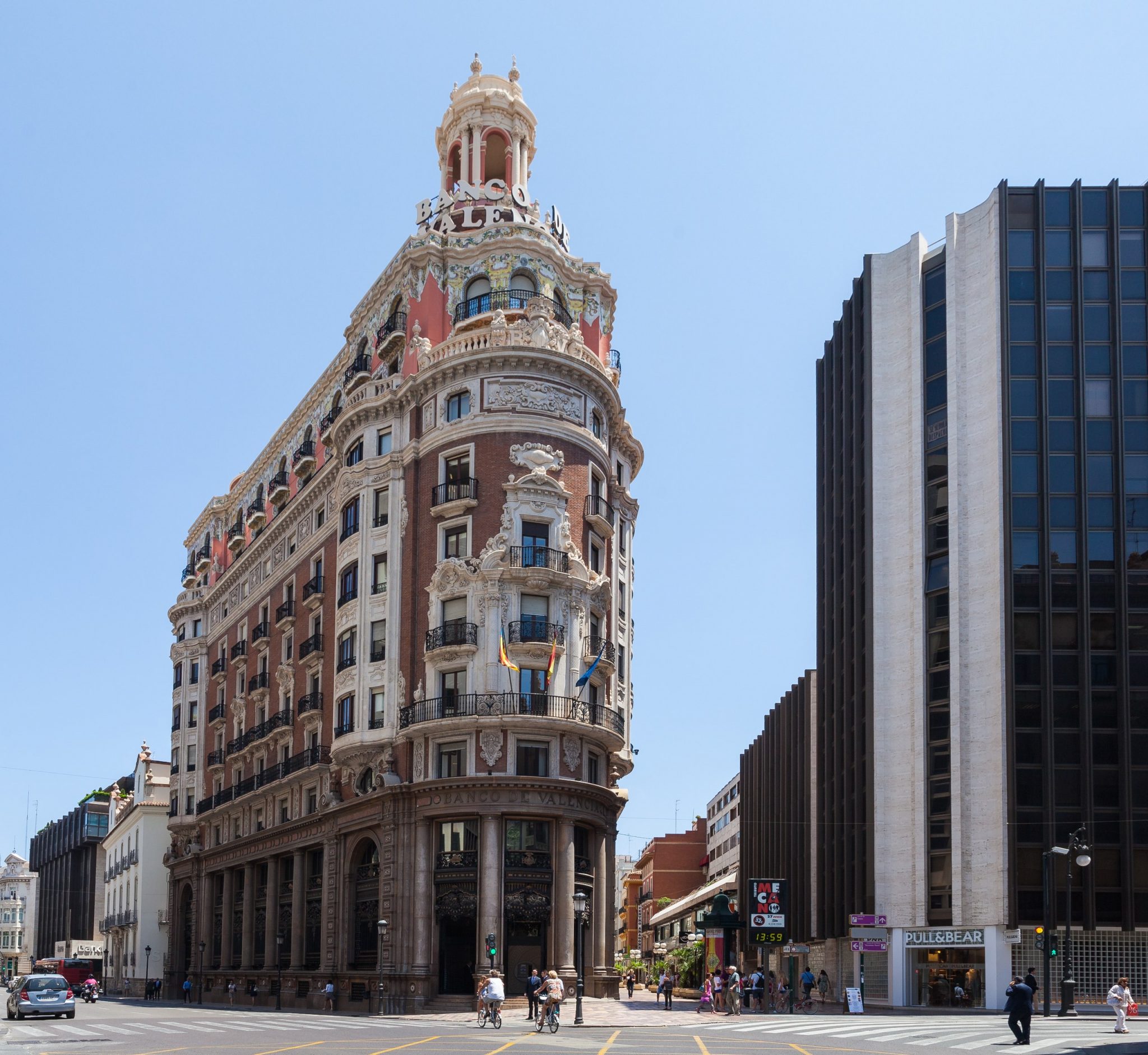
Diego Delso, CC BY-SA 4.0, via Wikimedia Commons
Die engen, mit Kopfstein gepflasterten Straßen der Altstadt, gesäumt von traditionellen spanischen Fassaden, führen nahtlos in weitläufige Gebiete über, die schlanke, moderne Strukturen zur Schau stellen. Diese Mischung ermöglicht es Valencia, ein doppeltes Erlebnis zu bieten – historische Erkundung neben avantgardistischer Innovation.

Joanbanjo, CC BY-SA 3.0, via Wikimedia Commons
Im Jahr 2022, als Welt-Designhauptstadt, startete Valencia Initiativen, die darauf abzielten, die Rolle des Designs bei der Verbesserung der Lebensqualität, der Förderung von Innovationen und der Erzeugung systemischer Veränderungen zu demonstrieren. Das Jahr vor dieser Auszeichnung war gefüllt mit Aktivitäten und Projekten, die darauf ausgelegt waren, internationale Aufmerksamkeit zu erregen und den umfassenden Einfluss des Designs auf Stadtplanung, Kultur und Wirtschaft zu demonstrieren.
Das Nebeneinander von Alt und Neu hat tiefgreifende Auswirkungen auf die kulturelle und wirtschaftliche Vitalität Valencias. Architektonisch bedeutende Orte wie der Palast des Marqués de Dos Aguas und die Nordstation ziehen Touristen aus aller Welt an, während moderne Annehmlichkeiten wie die Banco de Valencia die Lebensqualität der Einwohner verbessern und die Stadt zu einem attraktiven Ziel für internationale Unternehmen und Veranstaltungen machen.
Valencia steht als lebendiges Zeugnis für die Kraft der architektonischen Integration. Hier wird die Vergangenheit nicht von Neuem überschattet, sondern vielmehr durch sie beleuchtet, was eine dynamische Umgebung schafft, in der beide gedeihen können. Während Städte weltweit mit den Herausforderungen der Modernisierung kämpfen und gleichzeitig versuchen, ihr historisches Wesen zu bewahren, bietet Valencia einen Entwurf für Ausgewogenheit und Harmonie.



